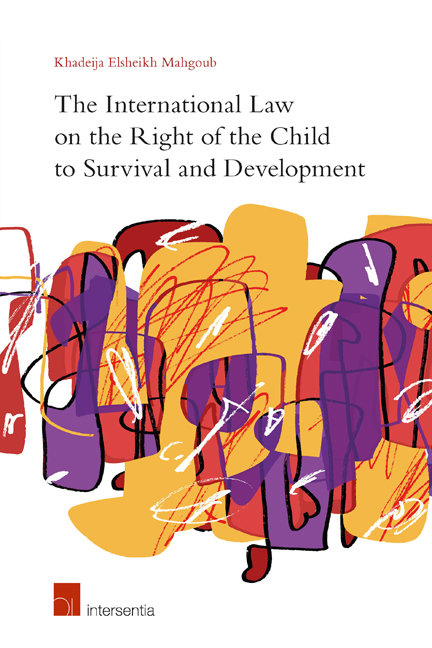Book contents
- Frontmatter
- Acknowledgements
- Contents
- Introduction
- Chapter 1 Historical Background
- Chapter 2 Current and Possible Interpretations of Article 6(2). Analytical Perspectives to the Work of the Committee on the Rights of the Child
- Chapter 3 The Nature of Article 6(2) on the Survival and Development of the Child
- Chapter 4 The Survival and Development of the Child and the Child's Human Dignity
- Chapter 5 Who is Responsible? The Obligation of the State Party to Create Measures and Conditions Necessary for the Survival and Development of the Child
- Chapter 6 Case Studies on Article 6(2)
- Conclusion
- Bibliography
- Official Documents
Chapter 2 - Current and Possible Interpretations of Article 6(2). Analytical Perspectives to the Work of the Committee on the Rights of the Child
Published online by Cambridge University Press: 28 November 2017
- Frontmatter
- Acknowledgements
- Contents
- Introduction
- Chapter 1 Historical Background
- Chapter 2 Current and Possible Interpretations of Article 6(2). Analytical Perspectives to the Work of the Committee on the Rights of the Child
- Chapter 3 The Nature of Article 6(2) on the Survival and Development of the Child
- Chapter 4 The Survival and Development of the Child and the Child's Human Dignity
- Chapter 5 Who is Responsible? The Obligation of the State Party to Create Measures and Conditions Necessary for the Survival and Development of the Child
- Chapter 6 Case Studies on Article 6(2)
- Conclusion
- Bibliography
- Official Documents
Summary
INTRODUCTION
Most of the major international United Nations human rights conventions provide for a body responsible for supervising and monitoring the convention concerned. In this context, article 43(1) of the Convention on the Rights of the Child (CRC) establishes the Committee on the Rights of the Child: ‘For the purpose of examining the progress made by States Parties in achieving the realization of the obligations undertaken in the present Convention, there shall be established a Committee on the Rights of the Child, which shall carry out the functions hereinafter provided.’ The first members of the Committee were elected in 1991. They are elected ‘for a term of four years by States parties in accordance with article 43 of the CRC. Members serve in their personal capacity and may be re-elected if nominated.’ More details of the Committee, its members and its work are mentioned later in this chapter.
This chapter focuses mainly on the Committee's interpretation and understanding of article 6(2) of the CRC on the right of the child to survival and development. It is important to emphasise that most of the discussion in this chapter is generated from the Committee's handling of article 6(2). The Committee's role in monitoring the implementation of article 6(2) by States’ Parties is evident. In this respect, it is important to study the Committee's literature in relation to article 6(2).
Furthermore, the chapter discusses the possible reasons that led the Committee to choose its opinions for the interpretation of article 6(2). It is probably worth mentioning that this is not an easy task. Earlier Cohen and Kilbourne observed in their analysis of the ‘jurisprudence’ of the Committee on the Rights of the Child back in 1998: ‘Unfortunately, establishing the jurisprudence of the Committee on the Rights of the Child is largely a matter of guesswork. Scholars and researchers cannot state with any certainty exactly how the Committee interprets a given article of the Convention. That task is probably difficult even for members of the Committee themselves.’ More than twenty years have passed since the establishment of the Committee; this gives a chance, at least, to study its methodology in interpreting the articles of the Convention.
- Type
- Chapter
- Information
- Publisher: IntersentiaPrint publication year: 2015



